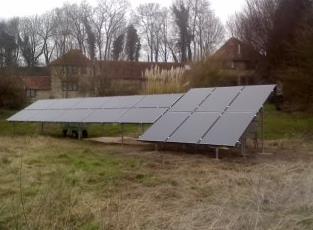Is Planning Permission Needed for Ground Mounted Solar Panels?
When considering the installation of ground-mounted solar panels, one of the first questions that arises is whether planning permission is required. Unlike their rooftop counterparts, ground-mounted systems can have different regulations due to their impact on the land and surroundings. This article delves into the requirements and considerations for obtaining planning permission for ground-mounted solar panels.

Understanding Planning Permission
Planning permission is a legal process designed to regulate the development and use of land in the public interest. It considers factors like environmental impact, aesthetics, and the effect on the local community. For ground-mounted solar panels, whether you need planning permission depends on several factors including the size of the system, its location, and local zoning laws.
Size and Scale
The need for planning permission often hinges on the size of the solar panel installation. For instance, small-scale systems under a certain size threshold—typically around 4 kWp in capacity and covering an area less than 9 square meters—may not require permission. However, larger installations almost always do, given their potential impact on the landscape and environment.
Location Considerations
- Residential Areas: In residential zones, the criteria for planning permission can be stricter due to concerns about visual impact and land use.
- Rural and Agricultural Land: While there might be more leniency in rural or agricultural areas, significant installations may still undergo thorough review to assess their impact on soil quality, wildlife, and the character of the landscape.
- Protected Areas: National parks, conservation areas, and historical sites have stringent restrictions. Almost all developments in these areas, including solar installations, require planning permission to ensure they do not harm the locale's natural or historical value.
The Application Process
Applying for planning permission involves submitting detailed plans of the proposed installation, including its size, location, and design, to the local planning authority (LPA). The LPA will consider the application against local development plans and any relevant environmental or community impact assessments.
Public Consultation
Often, part of the planning permission process includes a period of public consultation, where neighbors and community members can view the proposed plans and submit any objections or concerns. This step ensures that the interests and opinions of the community are considered in the decision-making process.
Ground Mounted Solar Panels Planning Permission: Key Takeaways
- Check Local Regulations: Always start by consulting your LPA or a professional advisor to understand the specific requirements in your area.
- Prepare Detailed Plans: When applying, ensure your submission includes all necessary details and complies with local guidelines to facilitate a smooth review process.
- Consider Environmental Impact: Be prepared to demonstrate how your installation will minimize its impact on the environment and surroundings.
- Engage with the Community: Understanding and addressing community concerns can play a crucial role in the approval process.
In summary, while ground-mounted solar panels offer a flexible alternative to rooftop systems, they often require careful consideration of planning permission requirements. By understanding the factors that affect the need for permission and preparing a thorough application, you can increase the likelihood of a favorable outcome and contribute to the sustainable development of your area.